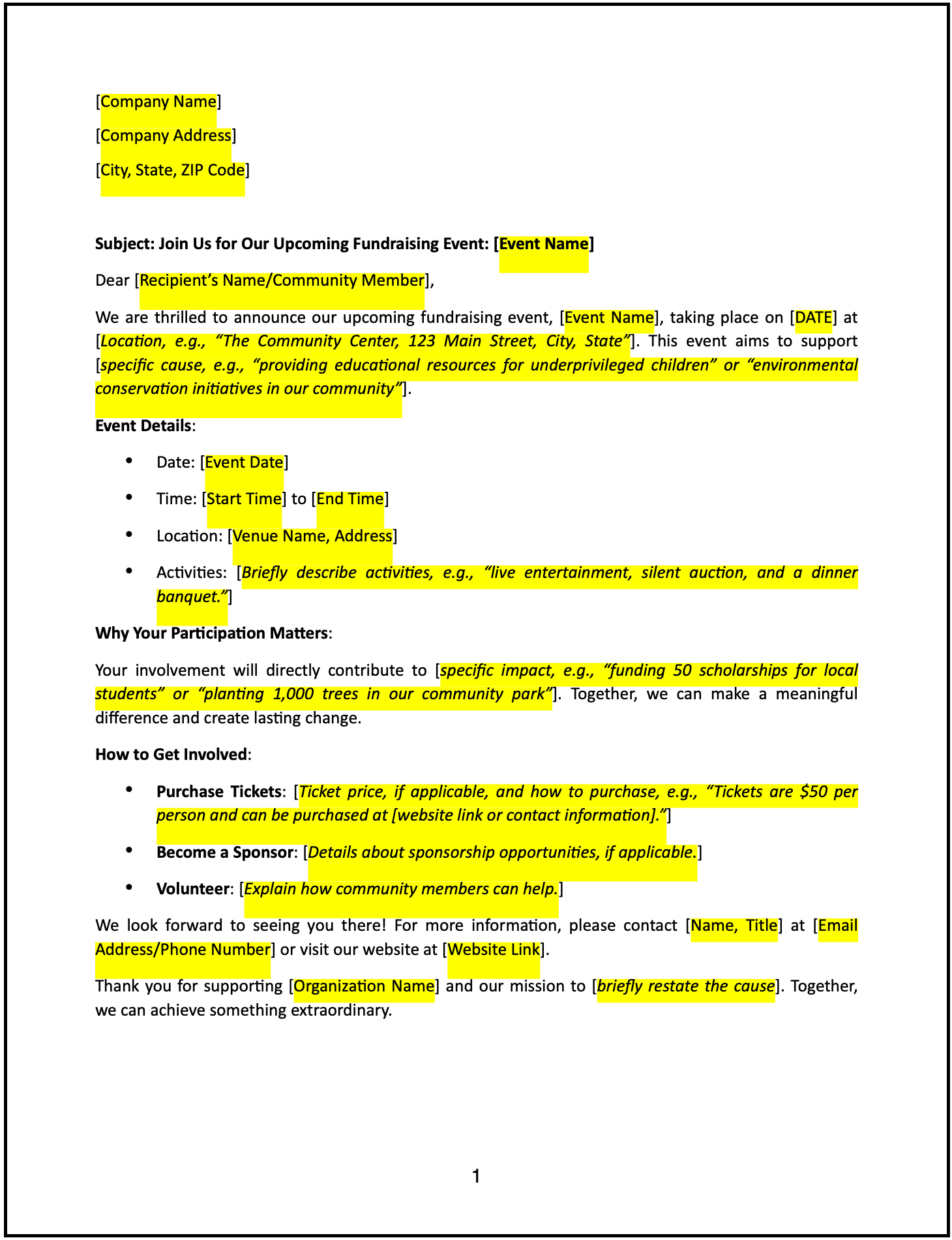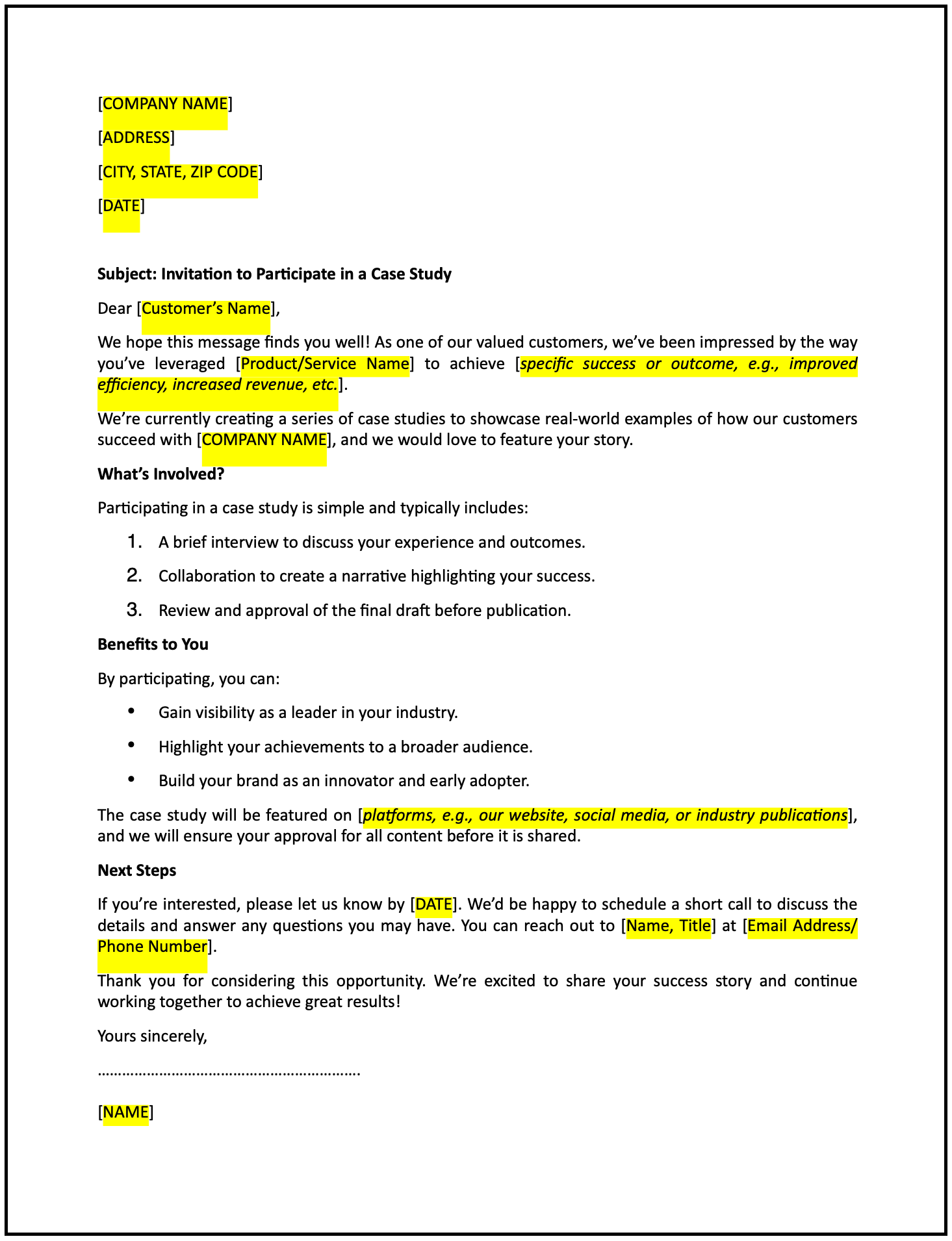Notification letter of cybersecurity breach: Free template

Notification letter of cybersecurity breach
A notification letter of a cybersecurity breach is a formal communication used to inform affected stakeholders about an incident involving unauthorized access to data or systems. This letter provides transparency, outlines the steps being taken to address the breach, and offers guidance to minimize potential impact.
How to use this notification letter of cybersecurity breach
- Open with an introduction: Address the recipients respectfully and state the purpose of the letter—to notify them of a cybersecurity breach.
- Provide an overview of the incident: Briefly describe the nature of the breach, including when it occurred and the type of data or systems affected.
- Outline actions taken: Explain the immediate measures implemented to contain the breach and prevent further unauthorized access.
- Highlight next steps: Share the planned course of action, such as conducting a full investigation, notifying authorities, or enhancing security measures.
- Reassure stakeholders: Emphasize your commitment to resolving the issue and safeguarding their information.
- Include guidance: Offer actionable steps for recipients, such as monitoring accounts, resetting passwords, or contacting your support team for assistance.
- Maintain a professional tone: Ensure the letter is clear, respectful, and focused on resolution.
- Provide contact information: Include details for recipients to reach out with questions or concerns.
Benefits of using a notification letter of cybersecurity breach
This letter ensures a professional and structured way to address cybersecurity incidents while maintaining trust and providing reassurance. Here’s how it helps:
- Promotes transparency: Open communication demonstrates accountability and minimizes uncertainty.
- Reflects professionalism: A well-crafted letter shows attentiveness and commitment to resolving the issue.
- Builds trust: Addressing the breach promptly reassures stakeholders of your organization’s integrity.
- Encourages engagement: Providing actionable steps fosters collaboration in minimizing potential impact.
- Mitigates risk: Proactively notifying stakeholders helps reduce reputational and legal risks.
Tips for writing an effective notification letter of cybersecurity breach
- Be specific: Clearly describe the breach’s nature, affected data or systems, and actions being taken.
- Use professional language: Maintain a respectful and transparent tone to build trust and understanding.
- Provide context: Explain the steps being taken to resolve the issue and prevent future incidents.
- Highlight next steps: Share actionable advice for recipients to safeguard their information or accounts.
- Keep it concise: Focus on the key points while ensuring the tone is professional and empathetic.
Frequently asked questions (FAQs)
Q: What details should I include in this letter?
A: Include the breach’s nature, affected data or systems, actions taken, and guidance for recipients.
Q: Should I personalize the letter?
A: Yes, addressing recipients directly ensures clarity and demonstrates attentiveness.
Q: Who typically sends this letter?
A: Data protection officers, IT managers, or organizational leadership typically send this letter.
Q: How formal should this letter be?
A: The tone should be professional yet empathetic, focusing on clarity and resolution.
Q: When should this letter be sent?
A: Send the letter as soon as possible after confirming the breach to maintain transparency.
Q: Can this letter include links to additional resources?
A: Yes, providing links to FAQs, support contacts, or incident updates can help recipients take appropriate action.
Q: Is acknowledgment from recipients required?
A: While not mandatory, requesting acknowledgment ensures recipients are aware of and responding to the notification.
This article contains general legal information and does not contain legal advice. Cobrief is not a law firm or a substitute for an attorney or law firm. The law is complex and changes often. For legal advice, please ask a lawyer.


